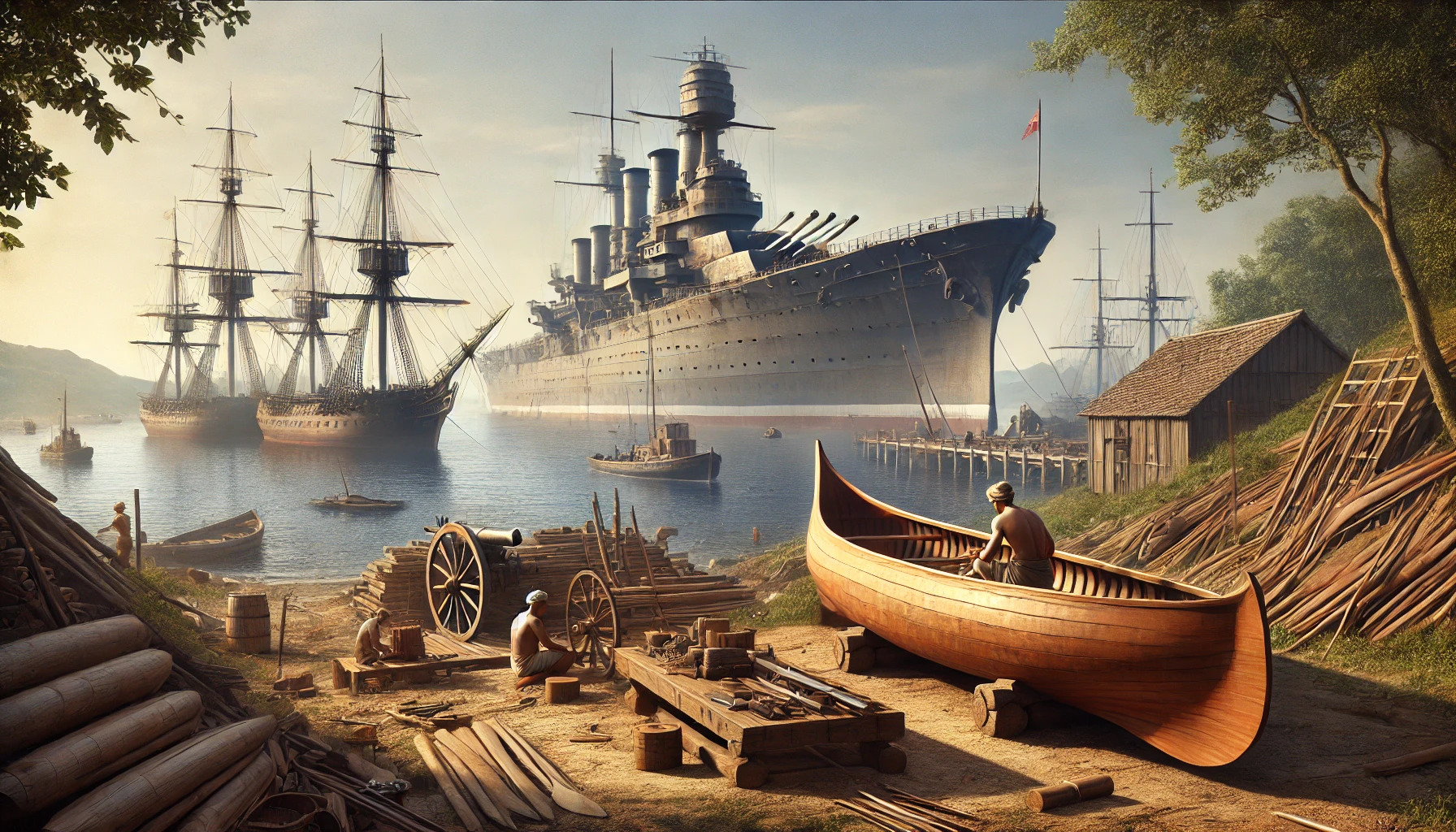Shipbuilding has a rich history that reflects human innovation and exploration. Over thousands of years, people have transitioned from simple dugout canoes to complex ironclad ships. This evolution not only showcases advancements in technology but also highlights how maritime needs have changed dramatically.
In ancient times, early humans crafted vessels from logs, enabling them to navigate rivers and lakes. As civilizations progressed, they developed more sophisticated ships for trade, exploration, and warfare. Each new design introduced new materials and technology, paving the way for remarkable creations like the ironclads that transformed naval battles in the 19th century.
Understanding this journey from humble beginnings to powerful ships invites readers to appreciate not just the vessels themselves but the human spirit of discovery. It shows how each innovation played a crucial role in connecting cultures and shaping history.
Early Maritime Endeavors
The development of early boat building and navigation techniques laid the foundation for maritime activities. These initial efforts allowed humans to explore waterways, trade, and access resources in a way that significantly impacted their societies.
The Birth of Boat Building
The journey of shipbuilding began with simple structures. The earliest vessels were dugout canoes, made by hollowing out tree trunks. These canoes were lightweight and easy to maneuver, ideal for rivers and lakes.
As communities grew, so did their boat-making techniques. Early people started crafting rafts from reeds and logs, expanding their reach to coastal waters. Different cultures developed unique designs based on their environments, leading to a variety of small boats suited for fishing and trade.
The advancements in materials played a crucial role in shipbuilding. As time went on, people learned to use wood more effectively, which allowed for stronger and larger vessels. This progress set the stage for more complex ship designs.
Advancements in Early Navigation
Alongside boat building, navigation techniques evolved. Early mariners relied on the stars, the sun, and their knowledge of currents to find their way. They developed a keen understanding of seasonal winds and tides, which helped them travel more distances.
As trade routes expanded, so did the need for reliable navigation tools. Some cultures created simple maps and used landmarks for guidance. The introduction of the compass later revolutionized navigation by providing consistent direction.
The combination of improved vessels and navigation methods enabled longer journeys. This opened up new opportunities for exploration and trade, shaping the relationship between different societies. These early endeavors were crucial for the development of maritime history.
The Age of Sails and Explorations
During the Age of Sails, maritime technology transformed. Innovations in ship design and navigation enabled long-distance voyages, leading to significant discoveries and developments in trade. This era saw powerful nations expand their influence over oceans and distant lands.
Design Innovations
The Age of Sails brought many design innovations. Ships like the galleon featured multiple masts and larger sails, allowing them to harness wind power effectively. These vessels could carry more cargo and withstand rough seas.
Key improvements in shipbuilding included:
- Keel: A strong backbone that improved stability.
- Sails: Triangle sails allowed for better maneuverability.
- Hull Designs: Sleeker shapes reduced water resistance.
These advancements made exploration possible, allowing sailors to navigate new trade routes and distant territories with confidence.
Famous Naval Expeditions
Numerous naval expeditions marked the Age of Sails. One notable journey was Christopher Columbus’s voyage in 1492. He sailed across the Atlantic Ocean in three ships, seeking a westward route to Asia. This expedition led to the discovery of the Americas.
Another famous expedition was Ferdinand Magellan’s journey in 1519. He became the first to circumnavigate the globe. Magellan’s fleet faced numerous challenges, but ultimately demonstrated the vastness of the world’s oceans and the possibilities they held.
These explorations significantly shaped global trade networks and cultural exchanges, linking distant lands in ways previously unimaginable.
Transitional Period: From Wood to Iron
The movement from wooden ships to iron vessels marked a significant turning point in maritime history. This change was primarily driven by advancements in technology, including the advent of steam power and the development of ironclads.
The Advent of Steam Power
The introduction of steam power in the early 19th century changed shipbuilding forever. Traditionally, ships relied on sails and manual labor. With steam engines, ships could move faster and more reliably.
Steam-powered ships began to replace sailing vessels in both commercial and military contexts. This new technology allowed for greater control over navigation, especially in adverse weather. The first successful steamship, Robert Fulton’s Clermont, launched in 1807, began this new era.
Shipbuilders had to adapt, incorporating iron materials to support the heavy steam engines. Timber was still important, but iron parts increasingly featured in ship designs, marking the beginning of a major transition in shipbuilding practices.
Ironclads and Their Impact
Ironclads emerged during the American Civil War as a revolutionary design. These warships, built with iron plating, were far more durable than wooden counterparts. They could withstand cannon fire and engage more effectively in naval combat.
The introduction of ironclads, like the USS Monitor and the CSS Virginia, changed naval warfare strategies. Their resilience forced a rethink on ship design and battle tactics.
With their success, many navies around the world shifted toward fully iron ships. This transition helped lay the groundwork for modern shipbuilding practices, making iron the material of choice for future vessels.

